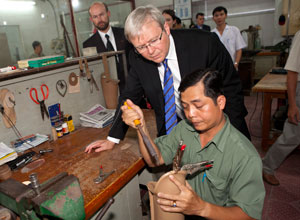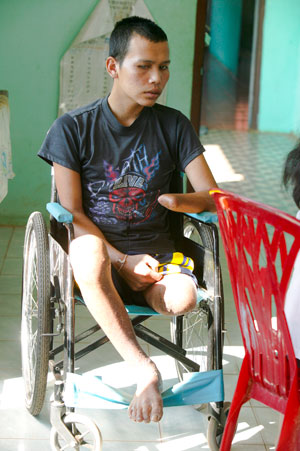Vietnam and Laos are amongst the countries most heavily affected by the devastating consequences of landmines, cluster munitions and other explosive remnants of war. Decades after the end of the Indochina war, Vietnamese and Lao people continue to suffer hundreds of casualties annually and thousands of hectares remain contaminated with these dangerous and indiscriminate weapons.
Australia is continuing to provide much needed mine action support to these countries to help clear contaminated land and provide rehabilitation services for thousands of people who have been injured.
During a visit to a rehabilitation centre in Ho Chi Minh City, Foreign Minister Kevin Rudd announced that Australia will invest a further $4 million over four years through the International Committee of the Red Cross Special Fund for the Disabled in Vietnam and other mine affected countries.
'Vietnam is one of the most mine contaminated countries in the region with an estimated 100,000 mine survivors. Over 20 per cent of the country is estimated to contain some 800,000 tonnes of explosive remnants of war which continue to kill and maim scores of Vietnamese every year,' Mr Rudd said.
'This new investment in the ICRC Special Fund for the Disabled will help centres such as this assist more men and women with prostheses and rehabilitation, giving them the opportunity to work to support their families and fully participate in their communities.
'This Australian support will mean that thousands more families will be able to farm on cleared land and hundreds of boys and girls can walk safely to school without the risk of terrible injury or death,' Mr Rudd said.
It is estimated that only three per cent of people with disability have access to rehabilitation services and only 5 to 15 per cent of people who require assistive aids, equipment and technologies can obtain them.
This assistance to Laos builds on more than $20 million in support from Australia for unexploded ordnance action since 1996. Australia's support to Laos has cleared unexploded devices from more than five million square metres of land, benefitting over 17,000 people living in contaminated provinces and providing access to rehabilitation services for over 12,000 vulnerable people.


